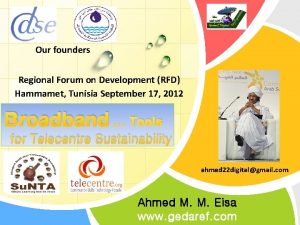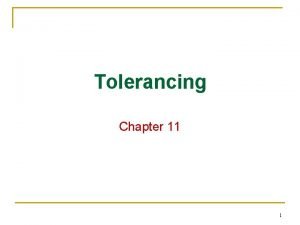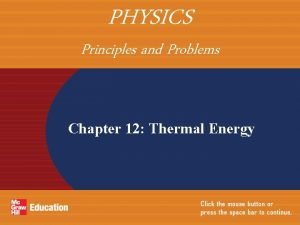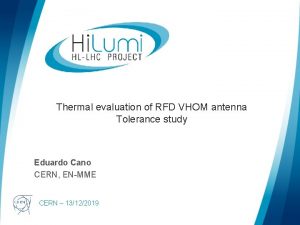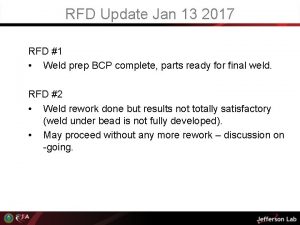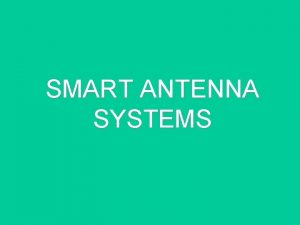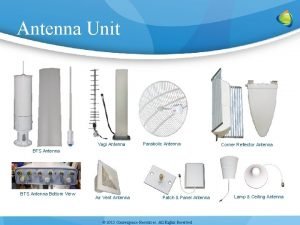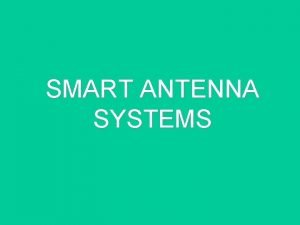Thermal evaluation of RFD VHOM antenna Tolerance study






- Slides: 6

Thermal evaluation of RFD VHOM antenna Tolerance study Eduardo Cano CERN, EN-MME logo area CERN – 13/12/2019

Numerical conditions • Material properties – Electrical and thermal conductivities dependent with temperature • • Initial temperature of 4 K Energies: 0. 93, 10. 7, 15. 6, 23. 5 J – Corresponding to ~1, 3. 4, 4. 1, 5 MV • • Niobium thermal conductivity: Padamsee (no phonon peak – conservative) Niobium electrical conductivity: Jamie data with (BCS) and residual resistance – 20 n. Ohm • • Copper thermal conductivity: Cryocomp RRR 90 Copper electrical conductivity: Calculated so that Rs=1 m. Ohm (constant as it is constant in the 2 K – 15 K range) – Anomalous skin effect considered. logo area 2

Nominal design • VHOM sensitivity to Nb-Cu boundary position Temperature increase distribution for 5 MV deflecting kick [K] Cu Cu Nb logo area • A hook in Nb significantly reduces the heat loss • Previous results: reducing the amount of Nb does not significantly affect the maximum temperature and heat loss. 3

Tolerance study – Waveguide tilting • • Tilting of the waveguide around the x and y axis. Worst case conditions tested. Increase of the heat loss of 15 % in the copper antenna. logo area 4

Nominal design – Flanges and alumina • Stainless steel flanges and alumina window included in the model Temperature distribution for 5 MV deflecting kick [K] Cu Cu Nb logo area • The Nb antenna is thermalized through the cavity, given the small heat loss due to RF heating. • The copper increases the temperature up to ~10 K at 5 MV due to the 0. 14 W heat loss. 5

Thank you for your attention! logo area CERN 6

